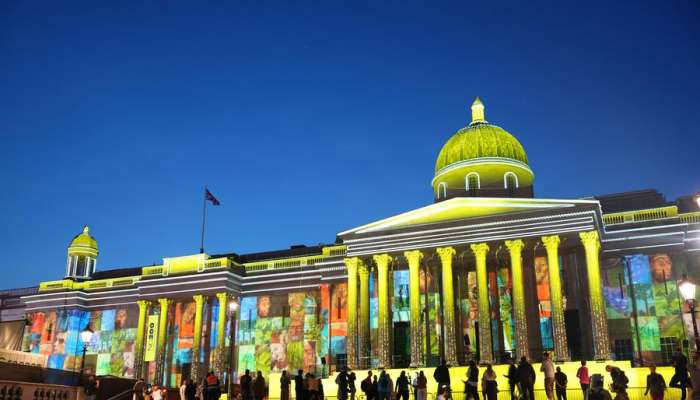
London: On Sunday's 2025 International Museum Day -- under the theme "The Future of Museums in Rapidly Changing Communities" -- British museums are transforming and rethinking their engagement with global audiences.
Established by the International Council of Museums, the event highlights the role of museums as platforms for cultural exchange, shared heritage enrichment, and the promotion of mutual understanding, cooperation and peace.
Museums are increasingly seen as neutral, inclusive spaces where people from diverse backgrounds can come together through history, art and shared experiences, staff at leading British museums told Xinhua in recent interviews.
Sir Gabriele Finaldi, director of the National Gallery since 2015, has led the gallery through significant transformations as it marked its 200th anniversary last year. Under his leadership, the National Gallery has expanded its digital presence, including launching a modern website and digitizing its collection with interactive features like virtual tours.
"People's interest in museums has only grown," Finaldi said. "Museums have been quick to embrace technology, but at the same time, they maintain their traditional role as custodians of important collections."
Amid the rise of digital exhibitions and new technologies, the physical experience of engaging with authentic artifacts remains essential.
Jessica Harrison-Hall, keeper of Asia at the British Museum, emphasized the importance of tangible experiences: "Younger generations are seeing the importance of encountering things that are real and historic, and that sort of encounter is life-changing for many."
She believes museums continue to resonate in today's fast-paced world. "The ability to connect with contemporary audiences while preserving and innovating is what gives museums their resilience," she said.
Li Xiaoxin, curator at the Asia Department of the Victoria and Albert Museum (V&A), is focused on bridging Chinese craftsmanship and British culture. As part of this effort, she invited Gyre Craft, a craft knowledge-sharing platform, to host a forum on British and Chinese craft cities during London Craft Week.
Li is also curating an exhibition which is set to open in late October and aims to highlight contemporary Chinese studio crafts. "I want to help the international audience understand that China is not just about antique porcelain or traditional crafts; there are more open and diverse aspects of Chinese culture," she said.
Since joining the V&A in 2018, Li has found curation to be a platform for creative expression. Curating and talking about Chinese artifacts is both challenging and rewarding, as each piece tells a unique story, she said.
Museum professionals agree that every visitor engages differently and that embracing the diversity is crucial. "Museums are places where we focus on similarities rather than differences," said Finaldi. "Understanding each other's cultures better is key to building connections."
He noted that the National Gallery's collection tells universal stories that transcend national boundaries: "These are things that, in a sense, bring us all together."
Harrison-Hall echoed this sentiment: "Museums are for everyone, offering multiple ways to engage. The most fascinating discoveries often happen by chance while exploring."
She noted that museum culture in China has diversified significantly, moving beyond large provincial museums to a wide range of cultural spaces, attracting more visitors than ever before. "It's absolutely fantastic to see this transformation," she said.